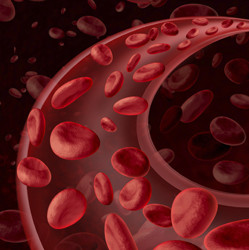Blood: The force of development
In the developing embryo, it is well established that cells divide, migrate and differentiate in response to environmental cues. However, it remains unclear how biological systems sense their environment and how positional information is associated with geometrical constraints. The first functional organ in the developing embryo is the heart, underscoring the importance of the cardiovascular system and blood flow in growth. The scope of the EU-funded 'Biological flows and embryonic development' (FLOWBUILT) project was to delineate the role of blood flow early on in development and identify the molecular pathways it activates. Scientists were mainly interested in studying vessel formation during embryogenesis. For this purpose, they chose zebrafish as the model organism mainly due to its optical transparency and ease of genetic manipulation. In addition, zebrafish embryos do not need heart function during the first five days of development, rendering them excellent models to address the roles of flow forces during angiogenesis. By combining novel imaging methods and blood flow modelling, researchers were able to characterise blood vessel biomechanics during vessel formation. The models of the entire zebrafish vascular network indicated that the stress in newly formed vessels is significantly influenced by red cells in the blood. At the molecular level, blood flow was also discovered to impact on endothelium maturation. Through the study of heart valve mutants, the consortium elucidated the effect of blood flow on certain cellular rearrangements that take place during valve formation. Considerable effort was devoted to identifying mechanisms in the developing endothelium that can sense the blood flow. Scientists discovered that cell protrusions known as cilia extend from endothelial cells during angiogenesis and serve as detectors of the flow forces. This finding led to elucidation of the role of blood flow during heart development in health and disease. Taken together, the results of the FLOWBUILT project provide fundamental insight into some key mechanisms that drive embryo development. The generated data emphasises the role of blood flow in vessel formation and heart growth, and could be used to understand congenital cardiomyopathies.
Keywords
Zebrafish, blood flow, embryo development, heart, biological flows

